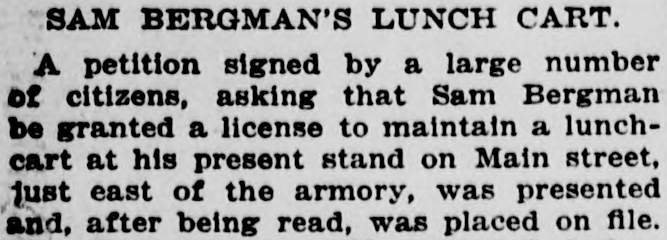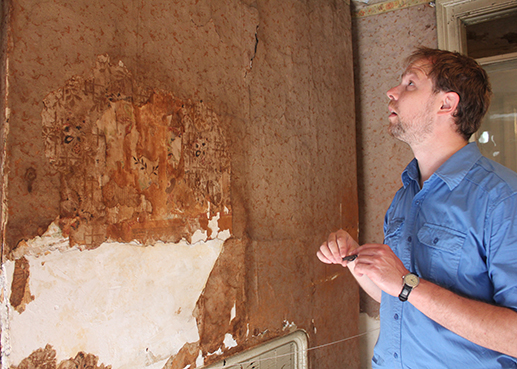
*
Egbert Stolk writes as a guest blogger for our User Spotlight Series this month. Egbert recently graduated from the University of Vermont’s Historic Preservation Program with a Master of Science. Below he shares his experience of using Chronicling America to research immigrant stories for The Burlington Edible Food Tour.
************************************************************************
In my work for the edible food walking tour in Burlington, Vermont, we strive to gather immigrant stories who were working directly or indirectly in the food industry in Burlington. The different ethnic groups that came to America, and in our case specifically Burlington, also brought their food traditions with them. Sometimes traditional food was sold in shops or otherwise immigrants sold American food, while cooking ethnic food at home. In The Burlington Edible Food Tour we try to uncover immigrant and food stories, and places that relate to these stories. We used the online newspaper database Chronicling America to find more stories for the tour. For example: to locate street vendors and restaurants owned by immigrants and events pertaining to those businesses. It was very helpful as history is sometimes lost forever, but with the help of century-old journalism we are able to reconstruct part of Burlington’s immigrant history.
An interesting story is that of the Jewish food cart owner Samuel Bergman. “Uncle Sam’s Lunch Cart,” as it was dubbed, probably sold American street food on Church Street at the beginning of the 20th century. Food carts were a common feature in the American street landscape. It is likely that Mr. Bergman’s food cart was large enough for people to sit inside and that it was probably mobile.
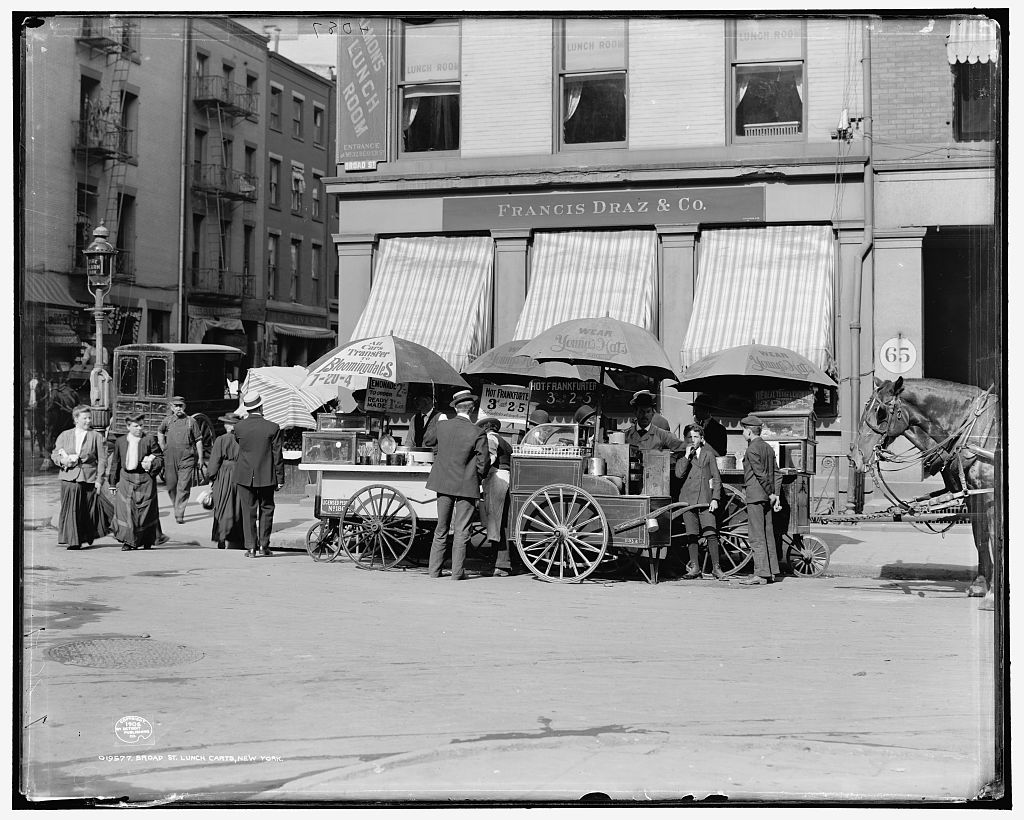
Notwithstanding his Jewish heritage, he probably sold American food as it sold better to the clientele he was serving. A food cart was used commonly by workers to have a cheap lunch. The historic newspapers on Chronicling America helped me to reveal that Mr. Bergman’s life as a street vendor was hard. His first street cart burnt to the ground at around 1900. A dispute over the payment of his second food cart went to court multiple times and in 1908 he was stabbed with his own bread-knife by an angry customer.
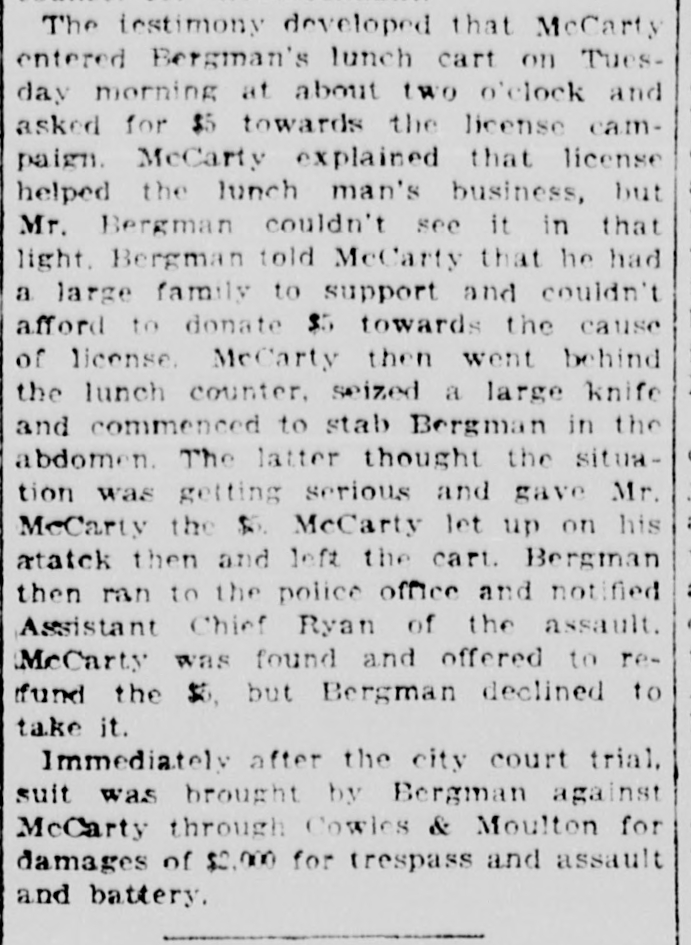
In the meantime, he moved from Church Street to Main Street, near the armory. We can only guess as to his reasons for this: maybe to serve customers closer to the harbor or maybe because Church Street was too expensive? His business venture suffered from a robbery and noise complaints by the neighborhood. The food cart probably served customers almost the entire day and night. The surrounding house owners had a lot of noise complaints and were probably afraid of nuisances from people who visited the food cart during ungodly hours.
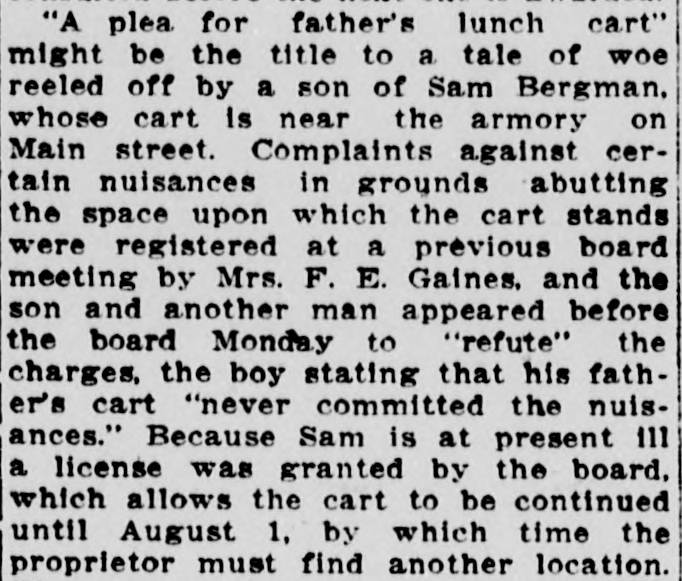
Neighbors aside, many others were upset about the potential of the license not being renewed and a number of people signed a petition in July of 1917 to let Sam’s lunch cart continue to stay open. Eventually, however, he had to shut down his business later in 1917 because his permit was not extended by the city of Burlington.
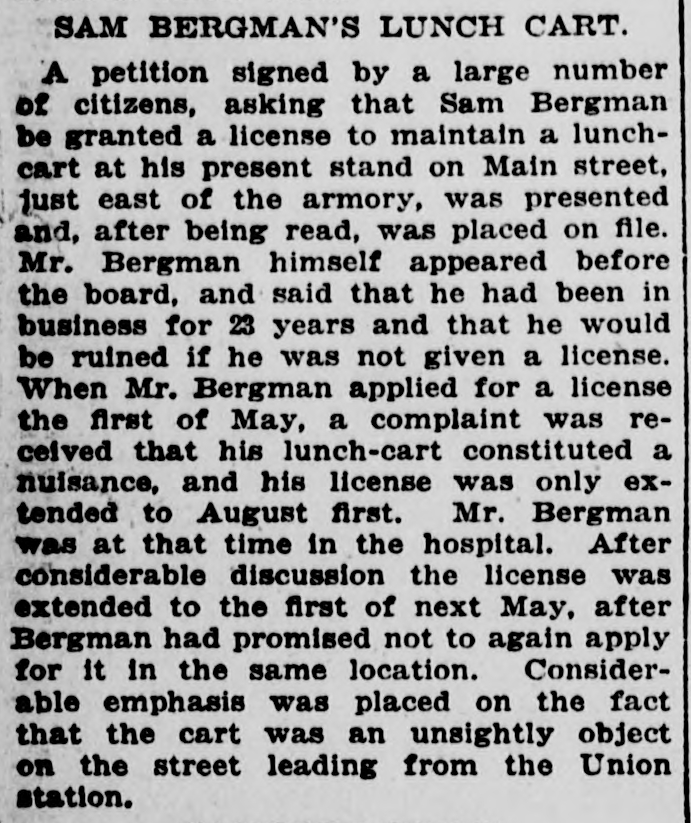
Although facts about immigrant business owners can be limited, the newspapers helped the Burlington Edible Food Tour find more pieces of the puzzle. We now know where and when Mr. Bergman had a food cart, probably what kind of clientele he served, and what happened to his business over the years. Like most newcomers, he had to adjust to the new situation and sold the food that served the needs of his “American” customers. Bergman’s history is part of hundreds of immigrant stories and their food businesses.
-Egbert Stolk
********************************************************************
Many thanks to Egbert Stolk for sharing his research finds using Chronicling America. Visit The Burlington Edible Food Tour website to learn more about the tour and its research in uncovering Burlington’s immigrant food stories. Egbert Stolk also has a website, on which he explores the relationships people have with places: https://www.spotstories.org.
If you have a story about how you’re using Chronicling America, we’d love to hear it! Email Karyn at knorwood@uvm.edu.

